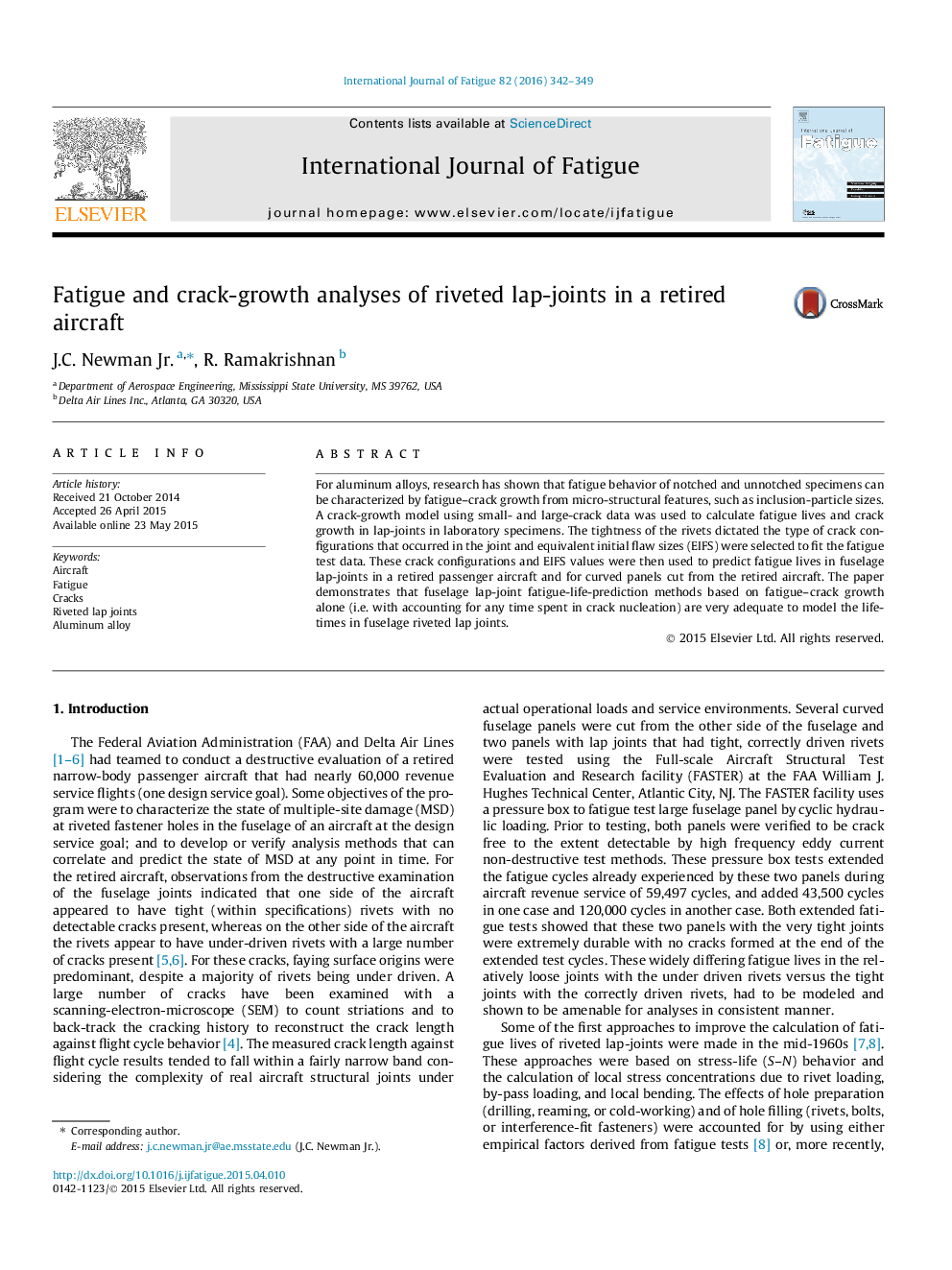| Article ID | Journal | Published Year | Pages | File Type |
|---|---|---|---|---|
| 778191 | International Journal of Fatigue | 2016 | 8 Pages |
For aluminum alloys, research has shown that fatigue behavior of notched and unnotched specimens can be characterized by fatigue–crack growth from micro-structural features, such as inclusion-particle sizes. A crack-growth model using small- and large-crack data was used to calculate fatigue lives and crack growth in lap-joints in laboratory specimens. The tightness of the rivets dictated the type of crack configurations that occurred in the joint and equivalent initial flaw sizes (EIFS) were selected to fit the fatigue test data. These crack configurations and EIFS values were then used to predict fatigue lives in fuselage lap-joints in a retired passenger aircraft and for curved panels cut from the retired aircraft. The paper demonstrates that fuselage lap-joint fatigue-life-prediction methods based on fatigue–crack growth alone (i.e. with accounting for any time spent in crack nucleation) are very adequate to model the lifetimes in fuselage riveted lap joints.
